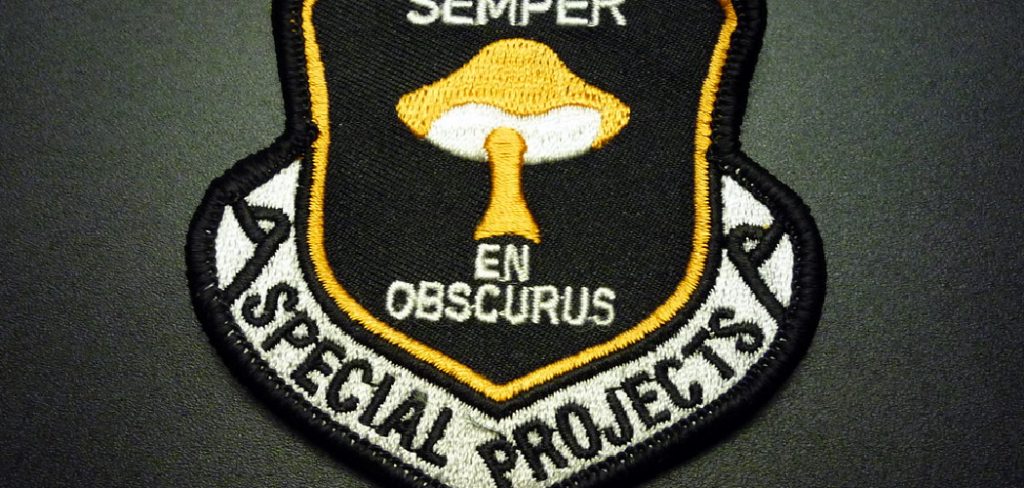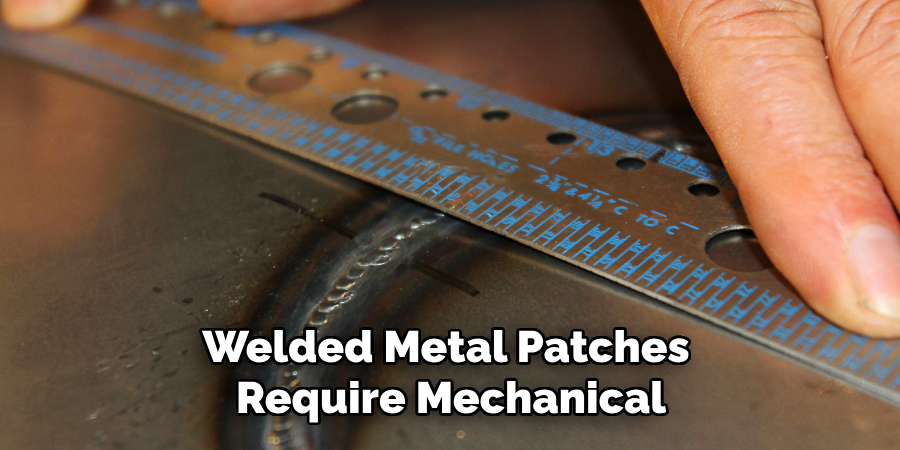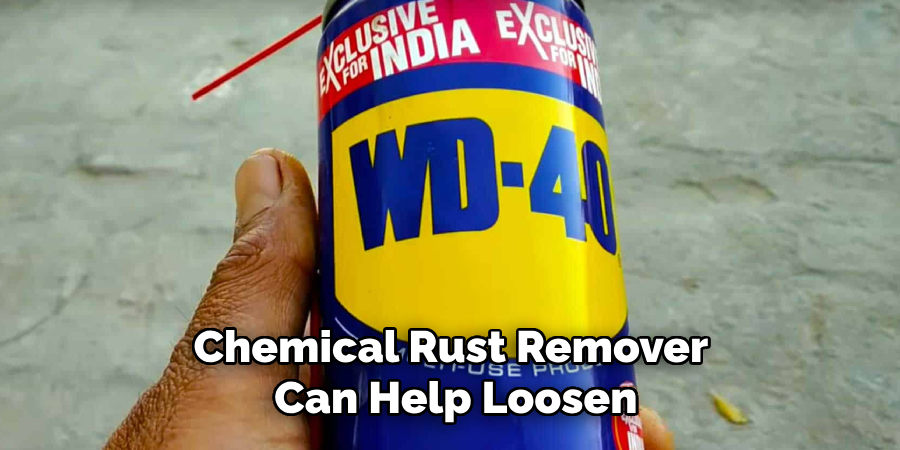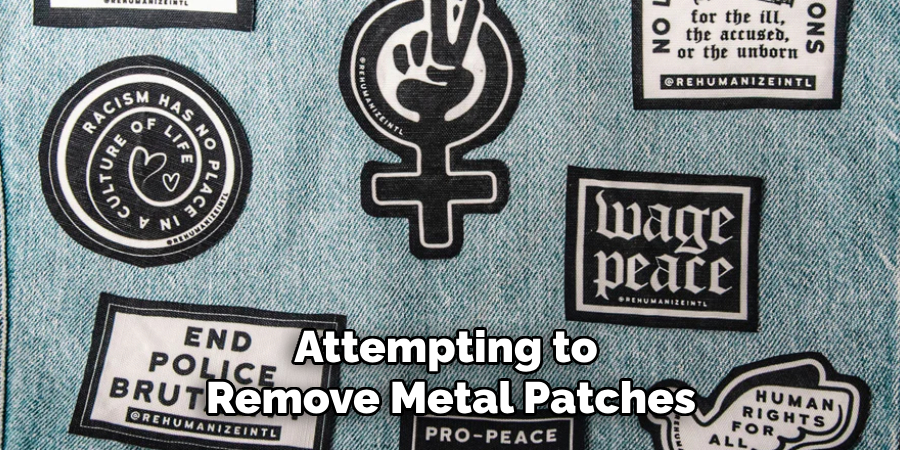Removing a metal patch can be a straightforward process if you have the right tools and follow the proper steps. Metal patches are often used for repairs or enhancements and can be found in various applications, from vehicle bodywork to household appliances. Before you begin, it is essential to understand the type of adhesive or fasteners used to secure the patch, as this will determine the most effective removal method. By following a few simple guidelines on how to get metal patch off, you can ensure a smooth and damage-free removal process.

Common Uses of Metal Patches
Metal patches serve a multitude of purposes across different industries and repairs. In automotive work, they are frequently employed to cover rusted or damaged areas on vehicle bodies, providing a temporary fix until more extensive repairs can be made. In household applications, metal patches are used to mend leaking pipes or reinforce weakened sections of appliances, such as washing machines or refrigerators. Additionally, in construction, metal patches can be utilized to repair metal roofing, ensuring that the structure remains waterproof and secure.
Tools and Materials Needed
To successfully remove a metal patch, you will need a variety of tools and materials that may vary depending on the method of attachment. For patches adhered with adhesive, a solvent such as acetone or a specialized adhesive remover is necessary to dissolve the bond. Additionally, a plastic scraper can be used to gently lift the edges without scratching the underlying surface. If the patch is fastened with screws or bolts, a suitable screwdriver or wrench will be essential. For surface cleaning and preparation, have a soft cloth or sponge on hand, along with a mild detergent or cleaner. Safety gear such as gloves and protective eyewear is also recommended to protect yourself during the removal process.
10 Methods How to Get Metal Patch off
1. Assess the Type of Attachment
Before attempting removal, examine how the metal patch is attached. It may be welded, glued, riveted, bolted, or soldered to the surface. Identifying the method of attachment will guide your approach. For instance, removing a welded patch requires tools like a grinder, while a glued patch might need solvents or heat. This initial assessment prevents unnecessary damage to the surrounding material and ensures you use the right tools.
2. Use a Grinder for Welded Patches
Welded metal patches require mechanical force to break the welds. An angle grinder is the most effective tool for this task. Equip the grinder with a cutting disc, and carefully cut along the edges of the welds. Once the welds are severed, use a hammer and chisel to pry the patch away. Wear protective gear, including goggles and gloves, as sparks and metal debris can cause injuries. This method is ideal for heavy-duty repairs or industrial settings.

3. Apply a Solvent for Adhesive-Based Patches
If the metal patch is attached with adhesive, solvents like acetone or a specialized adhesive remover can break down the bond. Apply the solvent generously to the edges of the patch and allow it to penetrate for several minutes. Use a plastic scraper or putty knife to lift the patch gently. Repeat the process as needed until the patch detaches completely. This method is effective for patches applied to delicate surfaces like painted or coated metal.
4. Heat the Adhesive with a Heat Gun
Heat can soften adhesive bonds, making it easier to remove a metal patch. Use a heat gun to apply consistent heat around the edges of the patch. As the adhesive softens, pry the patch away using a scraper or chisel. Avoid overheating, as excessive heat can damage the surrounding material or cause warping. This method works well for patches attached with industrial-strength adhesives or epoxy.
5. Cut Through Rivets or Bolts
Metal patches secured with rivets or bolts require physical removal. For riveted patches, use a drill with a metal drill bit to drill out the rivet heads. Once the heads are removed, push the remaining shank through the hole. For bolted patches, loosen the bolts using a wrench or socket set. In cases where bolts are rusted or stripped, apply a rust remover or use an impact driver for extra torque.

6. Soften Soldered Joints with a Soldering Iron
Patches attached with solder can be removed by reheating the solder to soften it. Use a soldering iron or a heat gun designed for metalwork, and apply heat directly to the soldered joints. As the solder melts, carefully lift the patch using pliers or a scraper. Ensure the surface and patch are cooled properly before handling. This method is commonly used for smaller patches in electronics or plumbing.
7. Employ a Hammer and Chisel for Forceful Removal
For patches attached through mechanical force or degraded adhesives, a hammer and chisel can provide a straightforward solution. Position the chisel at an angle beneath the edge of the patch and tap it gently with the hammer to create a gap. Gradually work around the perimeter, increasing the force as needed. This method is particularly useful for thicker metal patches but requires caution to avoid damaging the underlying surface.
8. Sandblast the Edges for Stubborn Patches
Sandblasting is an effective way to remove rust, corrosion, or layers of adhesive securing a metal patch. Use a sandblaster to direct a high-pressure stream of abrasive material at the edges of the patch. This process weakens the bond and exposes the underlying surface. Sandblasting is especially useful for patches on rusted metal surfaces, such as vehicles or outdoor structures, but requires proper safety equipment.
9. Apply a Chemical Rust Remover
If a metal patch is stuck due to rust or corrosion, a chemical rust remover can help loosen it. Apply the rust remover generously around the patch and allow it to sit for the recommended time. The chemicals will break down rust, making it easier to pry the patch away. Rinse the area thoroughly after removal to neutralize any remaining chemicals. This method is ideal for older repairs or outdoor applications.

10. Seek Professional Assistance for Complex Patches
In cases where the metal patch is intricately attached, or the surrounding material is delicate or valuable, seeking professional assistance is advisable. Professionals have access to specialized tools and techniques, such as plasma cutting or precision grinding, to safely remove the patch without compromising the integrity of the workpiece. While this option may incur additional costs, it ensures precision and prevents accidental damage.
Tips for Achieving the Best Results
To ensure the most effective and efficient removal of a metal patch, consider the following tips:
- Safety First: Always wear appropriate safety gear such as gloves, goggles, and masks to protect yourself from debris, sparks, and harmful chemicals.
- Read and Follow Instructions: For chemical solvents or rust removers, carefully read and adhere to the manufacturer’s instructions to ensure safety and effectiveness.
- Conduct a Trial Run: Before fully committing to a chosen method, test it on a small, inconspicuous area to gauge how it will affect the surface and attachment.
- Keep Tools Maintained: Ensure that all tools are in good working condition, with sharp blades and fully charged batteries, to facilitate smooth and swift operation.
- Work in a Well-Ventilated Area: When using chemicals or generating dust and fumes, work in an area with adequate ventilation to avoid inhaling harmful substances.
- Proceed with Patience: Avoid rushing the process. Take your time to methodically and carefully remove the patch to prevent any unnecessary damage to the surrounding material.
By following these tips, you can maximize your chances of achieving a clean and damage-free removal, ensuring a successful maintenance or repair project.
Common Mistakes to Avoid
When attempting to remove metal patches, it’s important to be mindful of potential missteps that can hinder the process or cause additional damage:
- Using Inappropriate Tools: Selecting the wrong tool for the job can lead to inefficient patch removal or even damage the surface. Ensure you have the correct tools before beginning, such as using a plastic scraper rather than a metal one on delicate surfaces.
- Applying Excessive Force: Overly aggressive methods can damage the underlying surface. If resistance is met, reconsider your approach instead of forcing the patch off, which can lead to unnecessary scratches or dents.
- Skipping Safety Measures: Failing to wear protective gear or ignoring safety guidelines can result in personal injury. Always prioritize safety by wearing goggles, gloves, and masks, and by following any chemical safety instructions.
- Neglecting Patch Condition Assessment: Before removal, evaluate the patch’s condition and how it’s attached. Underestimating the strength of adhesives or the extent of rust could lead to sudden breakage or strain on your tools.
- Ignoring Surface Sensitivity: Not all surfaces can withstand harsh methods like sandblasting or heat application. Always assess the material and opt for a less invasive method if needed to preserve the integrity of the surface.

Conclusion
Removing metal patches can be a meticulous task requiring a blend of knowledge, skill, and patience. By choosing the appropriate method based on the condition of the patch and the surrounding material, you can achieve effective results while minimizing damage. Prioritizing safety, conducting thorough assessments, and employing the correct tools are crucial steps in executing a successful patch removal. So, there you have it – a quick and easy guide on how to get metal patch off.
Edmund Sumlin is a skilled author for Metal Fixes, bringing 6 years of expertise in crafting a wide range of metal fixtures. With a strong background in metalwork, Edmund’s knowledge spans various types of fixtures, from decorative pieces to functional hardware, blending precision with creativity. His passion for metalworking and design has made him a trusted resource in the industry.
Professional Focus:
- Expert in Metal Fixtures : Edmund aesthetic specializes in creating durable and innovative metal fixtures, offering both appeal and functionality. His work reflects a deep understanding of metalworking techniques and materials.
- Sustainability Advocate : He is dedicated to using sustainable practices, ensuring that every fixture is crafted with eco-friendly methods while maintaining high-quality standards.
In his writing for Metal Fixes, Edmund provides valuable insights into the latest trends, techniques, and practical advice for those passionate about metal fixtures, whether they are professionals or DIY enthusiasts. His focus on combining artistry with engineering helps others discover the true potential of metal in design.


